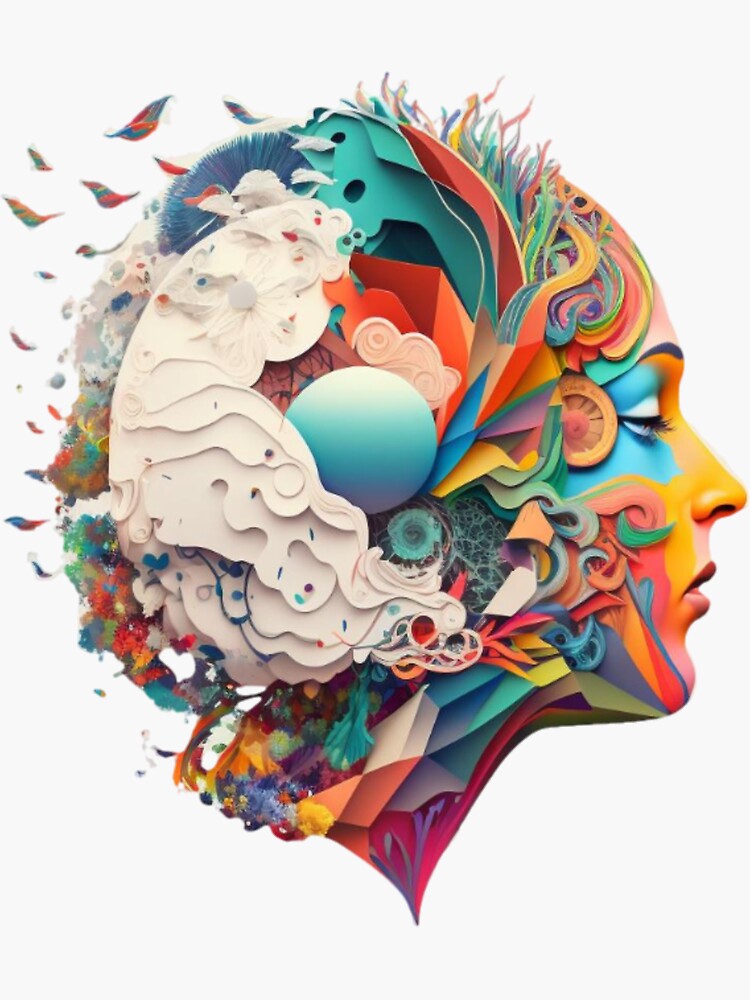Neuroscientists have found that creating art stimulates brain regions involved in planning, decision-making, and physical movement. On the flip side, appreciating art activates areas tied to memory, emotion, and complex interpretation. From the canvas to the cortex, let’s explore the fascinating neuroscience behind both art-making and art-viewing.
When you’re holding a paintbrush, deeply immersed in creativity, or standing before a captivating masterpiece, your brain isn’t just idly watching — it’s throwing a full-on neural party.
The Artists
When artists begin to paint, their prefrontal cortex — the brain’s executive manager — springs into action. Decisions such as “Should this sky be serene blue or fiery orange?” are made. The motor cortex then turns these choices into brushstrokes, bringing the artist’s vision to life.

The real magic occurs when artists reach the elusive “flow” state. Time seems to vanish, and they become fully immersed in creativity. During this state, the brain’s reward systems, especially the dopamine pathways, light up, making the process both satisfying and exhilarating (Csikszentmihalyi, 1997)

The Art Appreciators
Switch gears to viewing art. You might enter a gallery ready for a quick glance, but then something happens. Your brain, always on alert for the special, jumps into action when your eyes meet the canvas. The occipital lobe, responsible for visual processing, kicks into high gear. Meanwhile, the amygdala, the emotional center, decides if the piece will spark joy, awe, or a touch of confusion (Vessel, Starr, & Rubin, 2012).


Here’s where it gets fascinating: your brain doesn’t stop at an emotional response. It digs deeper, tapping into memories, experiences, and even forgotten art history facts thanks to the hippocampus. As you retrace from canvas to cortex, the prefrontal cortex steps in, piecing together meaning and context like an art detective uncovering hidden messages. Suddenly, you’re not just viewing art — you’re engaging with it on a deeply personal level, experiencing what researchers call “aesthetic resonance” (Leder, Belke, Oeberst, & Augustin, 2004).

The Merge
Both artists and appreciators merge neurologically on these levels:
- Shared Emotional Journey: Artists and viewers connect emotionally through the artwork. The feelings that artists infuse into their creations often resonate with viewers, creating a shared emotional experience.
- Cognitive Resonance: The mental processes involved in creating art, like ideation and refinement, reflect how viewers perceive and interpret the artwork. Viewers often trace the artist’s journey backward, from surface details to deeper meanings, mirroring the creative process (Tinio, 2010).
- Interpretative Alignment: Each viewer brings their own experiences to art interpretation. Often, their understanding aligns with the artist’s original concept, creating a unique connection between the two.
- Neurological Synchronization: Neuroaesthetic studies show that similar brain regions activate during both art creation and appreciation. This synchronization supports the idea of a shared cognitive and emotional experience.
- Contextual Influence: The viewing environment affects how this merge occurs. For instance, art in a museum setting may lead to a deeper connection and understanding than in a more casual setting.
As we continue to explore and engage with art, whether as creators or viewers, we unlock deeper insights into ourselves and our shared human experience. So next time you find yourself lost in a painting or caught in the flow of creating your own masterpiece, remember — your brain is not just observing or making art; it’s deeply involved in an extraordinary cognitive adventure. Embrace the journey, and let the art of the mind enhance your appreciation of the art of the world.
If you find neuroscience, psychology and art intriguing allow your brain to glow as you scroll through similar articles to this one.
References
Csikszentmihalyi, M. (1997). Flow: The Psychology of Optimal Experience. https://www.researchgate.net/publication/224927532_Flow_The_Psychology_of_Optimal_Experience
Leder, H., Belke, B., Oeberst, A., & Augustin, D. (2004). A model of aesthetic appreciation and aesthetic judgments. British Journal of Psychology, 95(4), 489-508.
Tinio, P. P. (2010). The Mirror Model of Art: A Cognitive Perspective on Art Creation and Art Viewing. In M. P. J. W. D. G. E. A. C. E. H. O. R. R. K. K. M. M. M. S. M. P. (Ed.), The Cambridge Handbook of Computational Psychology (pp. 419-436). Cambridge University Press.https://psycnet.apa.org/doiLanding?doi=10.1037%2Fa0030872
Vessel, E. A., Starr, G. G., & Rubin, N. (2012). The brain on art: Affective and aesthetic responses to visual art. Cognition, 123(3), 373-381.

Leave a Reply